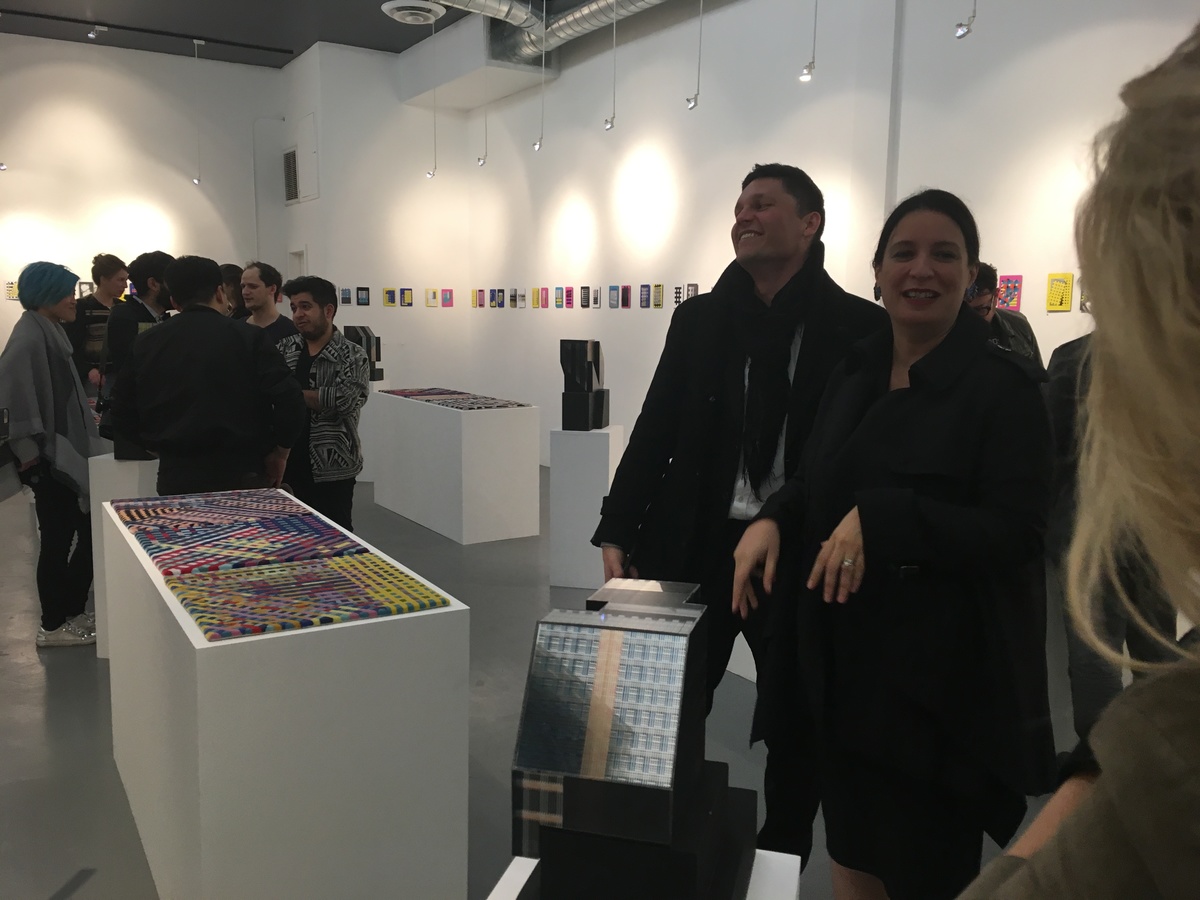SCI_Arc's Elena Manferdini's "Building Portraits" area rugs
(via Archinect)
At night, L.A.’s Chinatown is a mixture of shuttered family-owned shops and revamped gallery spaces, a kind of cross-hatching of history and amped-up opportunism. One can wander down numerous alleyways lit only by hanging lanterns until the blazing flourescence of a glass-fronted gallery comes into view. This historical menagerie turned out to be apt foregrounding for the “Building Portraits” opening held at the ToCo Haus Gallery on January 27th; here were rugs that blended architectural precedent with imaginative urban abstraction.

Andrei Zerebecky (third from right) and Elena Manferdini (second from right) get into the groove of the “Building Portraits” opening at ToCo Haus Gallery.
The collection is a collaboration between Four O Nine, a firm run by Lukasz Kos and Andrei Zerebecky, and artist and designer Elena Manferdini, who currently teaches at SCI-Arc and is the owner of Atelier Manferdini. Four O Nine’s “Urban Fabric” rugs, which render vast aerial views of cityscapes in New Zealand virgin wool, have been a success for several years. The rugs portray city blocks in textured formation, creating a three dimensional portrait of a landscape most people normally only view from an airplane window. The rugs are as much a delight for designers who regularly build large area models as they are for people who love the sensation of tailored, hand-tufted fabric.

BP Model D. Image: Elena Manferdini + Urban Fabric
For her part, Manferdini drew a series of images that combined studies of facade, fenestration and grids in the form of Mies van der Rohe’s skyscrapers with abstracted “reflections of [their] urban surroundings as well as revealed glimpses of the environment contained within.” The resulting rugs could therefore be likened to portraits of buildings if a Cubist like Picasso had worked in fiber instead of paint; multi-dimensional, intriguingly colorful, and revealing more about a structure than any directly linear interpretation could. At the opening, as participants drank glasses of choice prosecco and clustered around the display tables, it was common to find people running their hands along the valleys and swells of the sample rugs. “My five-year-old nephew would totally play with his toy cars here,” one attendee noted, tracing her hand along an L-shaped groove of fabric.
Zerebecky and Manferdini warmly greeted attendees as they filtered into the show, helping them navigate the physical rug displays, the 2D drawings on the walls, and a few 3D models of abstracted structures sprinkled throughout the gallery. As Manferdini noted in a written statement about the inspiration behind the rugs, “Architects have a seemingly unlimited faith in the power of the grid, a mastering system that has become dominant in a significant portion of the modern American cityscape. The set of drawings used in the design of this collection of rugs explores the potential of the contemporary grid and vibrant colors.”

BP Model A gallery. Image: Elena Manferdini + Urban Fabric
